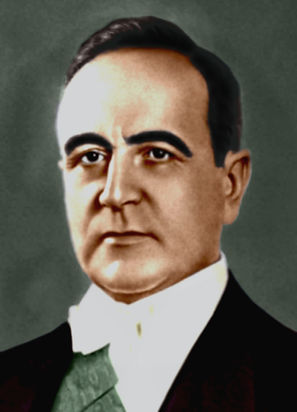
History and Demographics

In Brazil, there were different indigenous groups, but the main one was the Tupi-Guraní people. Before the Europeans arrived, Tupian was the main language of the native people. Many words in Tupian have influenced the Portuguese language in Brazil, and thousands of words were added because of this indigenous language [8]. Around 2-6 million indigenous people lived in Brazil before the Portuguese arrived. Many native people died, either by European diseases or in conflict with the Portuguese. In 1500, Portuguese explorer Pedro Cabral sailed so far left that he encountered South America, and claimed it as Portuguese land.
Pedro Cabral, the Portuguese explorer who founded Brazil (Wikimedia)
In the early 16th century, Europe had lost interest in Brazil. No one had noticed the amount of priceless metal, and it became a “no-man's land.” Then, around 1521, King John III shifted his attention to America. In 1533, Brazil was divided into 15 fiefs, which are a source of income given to a person by his government, in exchange for their services. These fiefs were given to important people in society, and each one was about 260 square miles. Two fiefs were majorly successful, São Vincente, which is in present day São Paulo, and Pernambuco, which was made into a thriving sugar producing region.
In 1555, the French tried to take over Brazil. French troops came to Rio de Janeiro, a harbor in which the Portuguese had surprisingly not taken over. The Portuguese forced the French out by blocking off the entrance to the harbor. Later, in 1624, the Dutch took over Pernambuco, a state in Brazil. In 1654, they too were forced out. Eventually, Dom Pedro took over Brazil. Some of the country wanted Brazil to turn into a colony again, not a democracy, but many people wanted Dom Pedro to lead. The Brazilians supported Pedro, and in 1822, he declared Brazil free from Portuguese control. A little while later, in 1871, Brazil created the Law of the Free Womb, which freed any child born into slavery. Seven hundred thousand people were freed by this law.
In the 1930’s, the Great Depression started under Vargas’s presidency. This was very hard on the economy of Brazil. Brazilians had a revolt against Vargas, but lost, and it was very bloody. After another uprising, Vargas made a constitution saying that he would stay in rule, which broke the democracy the Brazilians had worked hard to create. In World War II, 1939, Vargas allied with the United States, and Brazil helped the US by allowing them to use their naval and air bases. Eventually, Brazilians forced Vargas to leave his position, creating a democratic government again, and limiting the term to five years [9].

Vargas, Brazil's former president, who had a revolt thrown against him (Wikimedia)
There are many people of mixed and white descent in Brazil, as well as some black and asian. Surprisingly, there are less than 1% of indigenous people. There was a downfall in the 1980’s, including a declining population, and some people tried to emigrate to the United States, Japan, and Europe. There are many people who identify as white because of the amount of Portuguese people who came in the 16th century [10]. Overall, Brazil has had many leaders and events, and it is still changing history.